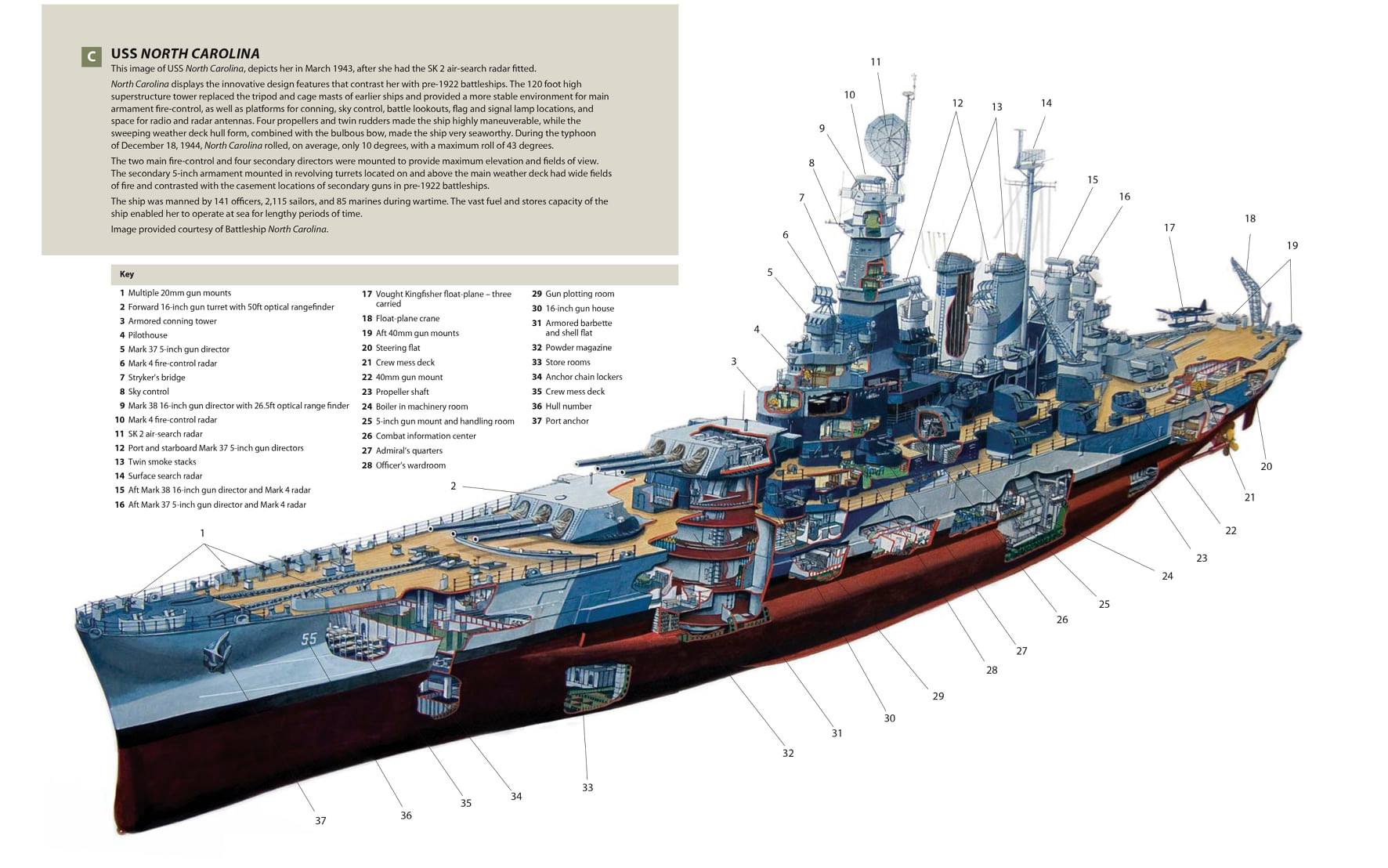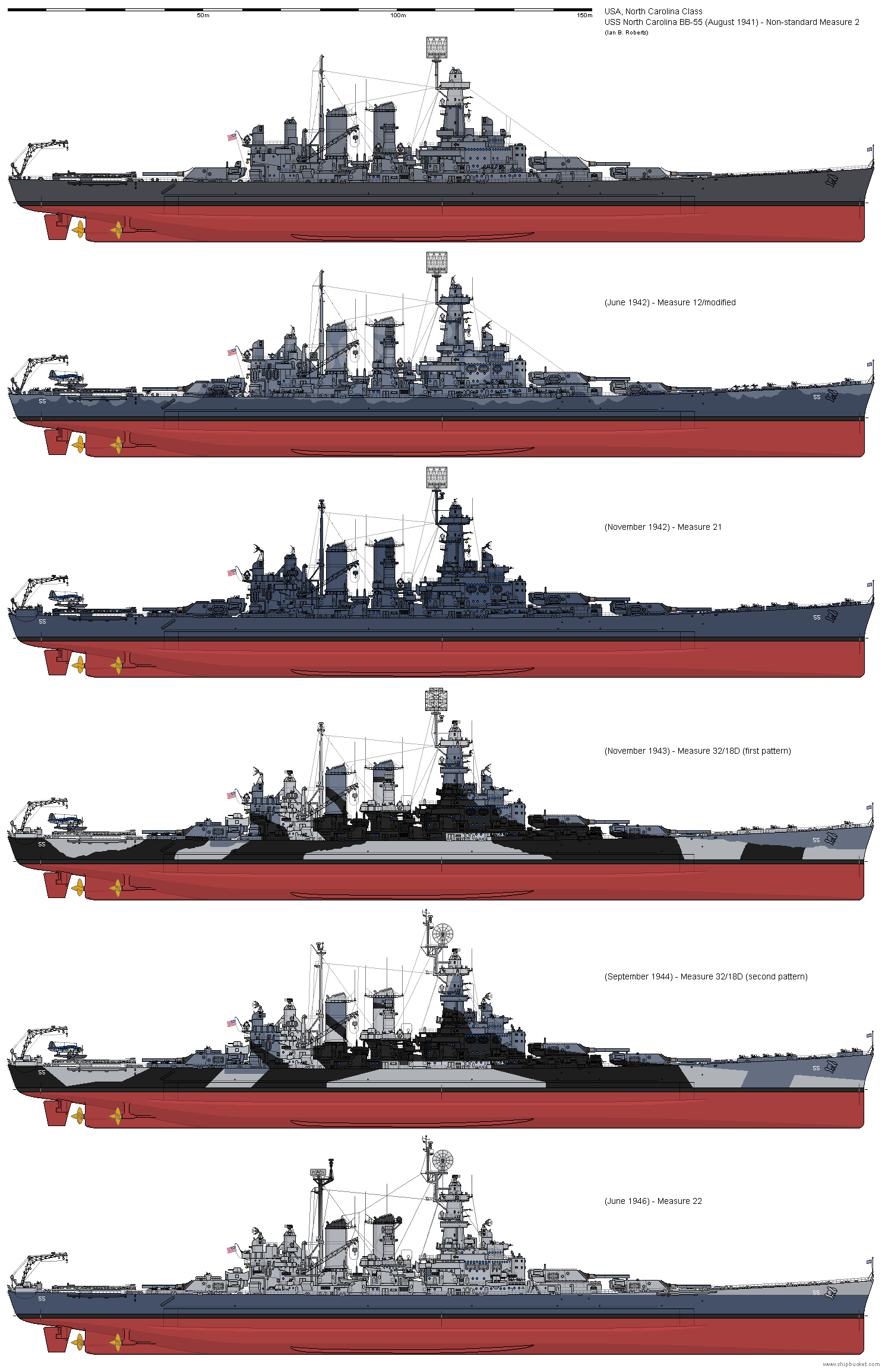The Washington class, in real life, were a class of two. These were followed by the four South Dakota class. Because I have a magic wand, I can fix the problems that were faced in the Washington class and supposedly cured in the South Dakota class. Therefore a class of six is the result.
The problem BuShips had was the same one faced by all navies building to the 35,000 ton/16" limit. It was impossible to produce a balanced design within those limits. So what happened? Most navies cheated. A reduction in main armament size from 16" to 15"/14" allowed a bit more displacement for armour and speed but the Germans and Italians took that to extremes. Giving the navies a chance to build a bit more into the first rotation of 35k ships has allowed the Allied navies a chance to build slightly better ships. This also applies to the Washington class. To keep with 16" guns and a speed of 27-28 knots meant that what had to give was armour, only a 12" main belt was fitted. This made them armoured against the Japanese 14" armed ships but the Nagato and Yamato would have had no problems piercing that sized belt. Also a problem was the underwater protection which was less than optimal. If you have a few thousand tons extra you can put into a design that sort of problem goes away.
I have done a lot of reading on the differences between the three modern US Navy battleship classes. The consensus put forward by one naval historian, was that the differences between the South Dakota and Iowa classes was only the extra tonnage. That extra displacement and size was the price paid to increase the speed by six knots. The armour scheme and armament was the same in both.

One of the most visible differences between the Washington and South Dakota class is the external armoured belt on the Washington's while the South Dakota had an internal belt. Another obvious difference between the two is the 28mm and 0.5" light AA guns on the North Carolina above, and the 40mm and 20mm fitted to the South Dakota.

Another criticism was the lack of space to allow the ships to be used as flag ships. The South Dakota had an enlarged bridge structure to allow for extra Admiral's staff. To make that change, two twin 5" were deleted.
Having set the scene, what do I want to do to the Washington, to improve the class and ameliorate the various problems. I figure an extra 25-30 feet of length, and 3,500-4,000 tons of displacement worked into the design should be enough to allow something extra for the various problems encountered in the original ships. I will put the extra length into the area between the funnels which should allow for an enlarged bridge structure to cure the Admiral problem. The extra length allows for better fitting of the machinery spaces. The extra displacement gets used in fixing those previous problems but would leave 2-2,500 tons to improve the armour deficiencies.
I will digress for a moment into the various navies doctrines on how ships should be armoured. The gold standard is to be armoured against the same guns as fitted to your ship 'balanced armour'. That would require 14" of side armour plate and 6" of deck armour for the Washingtons. The Royal Navy King George V ships had this armour but had a reduced 14" main battery. That was their compromise, lesser guns, more armour. It would have been easy enough for the US to achieve that level of armour, just reduce the speed of the ships to 22-23 knots and all the displacement needed for better armour would have been available. But, and this is my guess, the extra speed for the ships would be necessary for them to act with and be escorts to the aircraft carriers. This is in 1935 even before the Royal Navy shows what the aircraft carrier can do in the first two years of the war (with antiquated aircraft too!). Navies had been wargaming their ships against each other both in the theoretical floor games out into the big blue where theory became reality. The US Navy had the two large Lexington class carriers with which to play these games and learn just how good aircraft carriers were going to be. So better speed was a requirement for tactical flexibility with the carriers, rather than the ships being added to the existing 21 knot battleship battle line.
So above is my first try, which to me looks unbalanced where the funnels have ended up after adding the extra section in the middle of the ship. When I compare it to to the Louisiana superstructure, I prefer the Louisiana.
Pushing the fore funnel further forward has restored what I think of as 'balance' in the look of the design.

